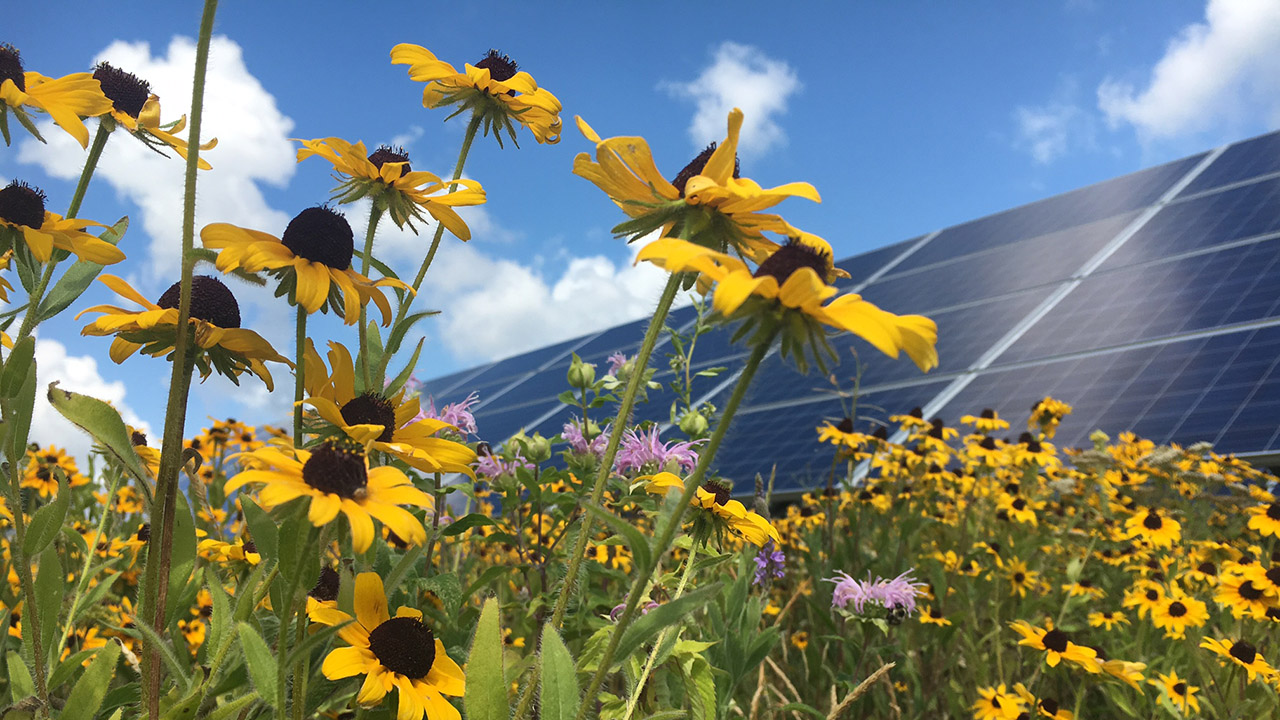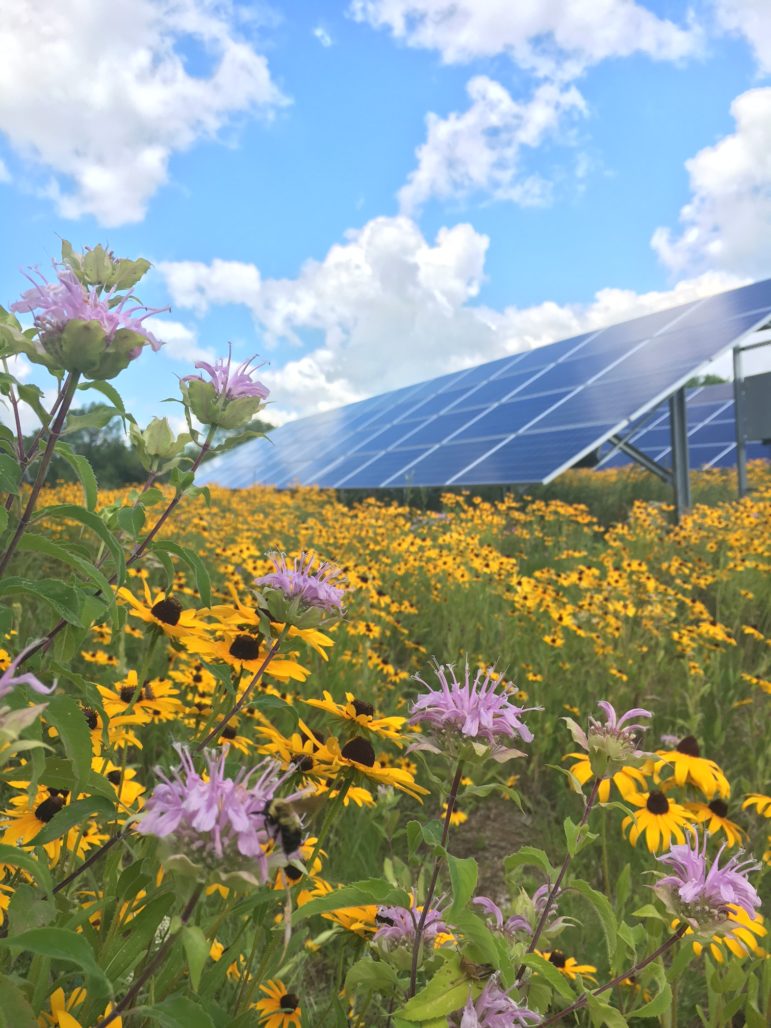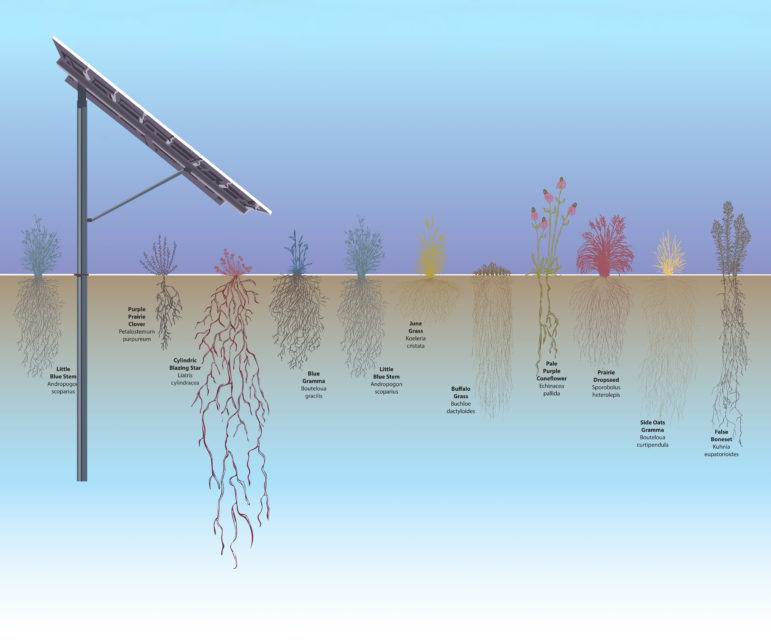
Throughout 2022, experts and stakeholders will be reconvening in this process to both validate and provide feedback on this foundational research. Get the latest updates from Great Plains Institute.
The U.S. is experiencing unprecedented growth in renewable energy deployment. With that growth has come a need to identify and implement best practices for all phases of new clean energy developments—from planning stages to breaking ground for construction to when clean energy begins to be harnessed from a site. As solar in particular booms across the country, clean energy and environmental partners and collaborators are examining how best to support solar projects and the host communities in which they are built.
Developing a large-scale solar installation is a complex process, requiring consideration of siting, permitting, land use, and access to transmission. With more and more solar installations set to come online across the nation in the coming years, it is crucial that new sites are built in a way that protects or even improves local water quality and habitat.
Developing with cost benefits and water quality in mind
To support this effort, the Department of Energy’s Solar Energy Technology office funded the Photovoltaic Stormwater Management Research and Testing (PV-SMaRT) project, led by the National Renewable Energy Laboratory (NREL), in partnership with Great Plains Institute, the University of Minnesota, and Fresh Energy. The project—which had extra support from a National Water Quality Taskforce comprised of 13 other organizations—aims to address a critical gap in water quality and cost management practices at solar installation sites across the U.S.
“Most existing water quality standards and best practices were not designed or tested for solar installations,” says Brian Ross, Vice President at the Great Plains Institute, “largely because there is a lack of science-based data connecting solar array development to long-term land use issues, like the effect they have on surface and ground waters.” Add to that the fact that permitting processes and water quality standards vary across jurisdictions, both state and local, and can be inconsistent across various stages of a project (e.g., pre- and post-construction), bringing unexpected costs and time delays to solar developers.
To address both the complexity of water standards, and the goal of achieving maximum environmental benefits, the PV-SMaRT project has two goals:
- develop science-based standards for estimating local water quality impacts of solar developments; and,
- assess existing permitting practices and standards for solar developments to prevent inadvertent barriers and open up opportunities to improve outcomes based on the science-based standards.

The PV-SMaRT project is also monitoring and collecting water quality data from five U.S. solar sites with different land and climate conditions. “The end goal is to develop research driven tools and best practices that can be used by permitting authorities and PV developers to make more informed decisions on stormwater management measures that are tailored to the true impacts of a PV array on the environment,” says Jennifer Daw, principal investigator for the PV-SMaRT project and Group Manager for Strategy, Policy & Implementation at NREL. This presents an opportunity to improve the consistency and transparency of water quality permitting across jurisdictions, which both enhances water quality outcomes and drives down costs at solar developments.
The project team’s assessment of existing stormwater and water quality permitting practices and standards for solar developments in several states was published by GPI as the PV-SMaRT Potential Stormwater Barriers and Opportunities report, which identified opportunities to improve the consistency and transparency of water quality permitting across jurisdictions. Now, based on field research and modeling activities conducted, the PV-SMaRT Barriers and Best Practices document provides the first available strategies for designing for stormwater management and water quality goals based on solar-specific field research and modeling for ground-mounted PV. These data-driven best practices can help reduce permitting uncertainty, limit unnecessary infrastructure costs, promote greater consistency across jurisdictions for large scale solar development permitting, and improve water quality outcomes.
Solar-specific best management practices
The project recommends the following set of new best practices:

- Practice site design for disconnection. Incorporate infiltration areas into array layout and design to distribute runoff across the site.
- Take a green infrastructure approach. Maximize, to the extent possible, use of native and deep-rooted naturalized vegetation in a diverse mix of vegetative cover across the site that can become self-sustaining (a minimum of maintenance needed) upon establishment.
- Use low-impact development (LID) construction techniques. Minimize to the extent practical or eliminate grading, prevent soil compaction during construction, and minimize soil removal unless a need for remediation, limit vegetation removal, protect existing functioning ecosystem and watershed functions. Incorporate appropriate (considering soil type and construction practices) decompaction into the project’s Stormwater Pollution Prevention Plan (SWPPP) for the construction general permit. Provide post-construction measurements of infiltrative capacity and soil density.
- Design array to sustain vegetative cover and infiltration. Use array design to allow self-sustaining vegetation cover under and between arrays. Design elements that affect vegetative cover functioning include: height of racking, use of tracking or fixed arrays, array layout that eases post-construction vegetative maintenance; use and functionality of bifacial panels, location of cables and conductors, and placement of access roads (when included).
- Adopt solar-specific mitigation of runoff under special (more challenging) site conditions. Special conditions could include steep slopes or clay soils, land slope orientation relative to array, and forested sites that are cleared for solar.
- Look beyond the design storm. Where modeling is required for post-construction standards, include estimates of stormwater infiltration capacity in excess of minimum standards for design storms set by authorities having jurisdiction (AHJ). With increasing severe weather, it is good to understand how much stormwater a site can accommodate.
- Consider habitat-friendly planting. Encourage consistency with established state pollinator or habitat-friendly solar standards or certifications to also optimize water quality benefits.
Stormwater permitting standards based on these best management practices will lower the costs of clean energy development and ensure protection of the host community’s surface and ground waters. Implementing these data-backed best practices will effectively support both water quality and developers’ bottom lines at solar installation sites. With more solar development on the horizon, these new tools will help craft a truly sustainable clean energy future that will benefit everyone for generations to come.
Additional Resources:
